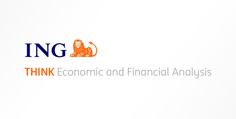Natural gas prices in the US and Europe surged higher yesterday. Short covering in Henry Hub provided more momentum to the rally
Energy - Natural Gas Strength, Oil Weakness
Oil prices came under further downward pressure yesterday. ICE Brent settled almost 2.8% lower on the day, falling below $72/bbl. USD strength - an ongoing theme since the US election - has provided strong headwinds not just to the oil market but also to the broader commodities complex. In addition, prompt time spreads for Brent and WTI have collapsed recently, moving closer to contango, suggesting a better-supplied physical market. Our oil balance through 2025 shows a surplus on the assumption that OPEC+ unwinds cuts as currently planned and that we do not see any dramatic changes to Iranian export volumes.
OPEC will release its monthly oil market report today which will include its latest outlook for the market through 2025. There is the potential for further demand revisions from the group. Last month, OPEC cut its demand growth forecasts by 110k b/d and 100k b/d for 2024 and 2025 respectively. However, the group still estimates demand to grow by 1.93m b/d this year and 1.74m b/d next year, which is still very aggressive compared to other demand estimates, which are nearer 1m b/d.
The natural gas market saw significant strength yesterday. Henry Hub settled 9.4% higher on the day, taking it above $2.90/MMBtu. Colder weather contributed to the move, while short covering added to the move. The latest CFTC data shows that speculators were holding a net short of almost 146k lots in Henry Hub as of last Tuesday, a sizeable short, which leaves plenty of potential short covering with the right catalyst.
In Europe, natural gas prices have also rallied. TTF settled more than 3.1% higher yesterday. Lower wind power generation has provided support to gas prices, while the forecast also shows cooler weather in the region, which should be supportive for heating demand.
Iron Ore Slips Back to $100/t
Iron ore slipped back to $100/t level on Monday after Beijing’s latest stimulus efforts mostly disappointed the market. Iron ore is among the most vulnerable to China's slowdown risks as the country's property market constitutes the bulk of steel demand. Beijing’s stimulus measures so far have focussed on clearing property inventories rather than boosting new starts, which is the biggest steel demand driver. In addition, China's iron ore port inventories have been increasing, further pressuring prices. They now stand at the highest level since early September. We believe high iron ore availability in China will continue to put pressure on prices.
Disclaimer: This publication has been prepared by ING solely for information purposes irrespective of a particular user's means, financial situation or investment objectives. The information does not constitute investment recommendation, and nor is it investment, legal or tax advice or an offer or solicitation to purchase or sell any financial instrument. Read more
